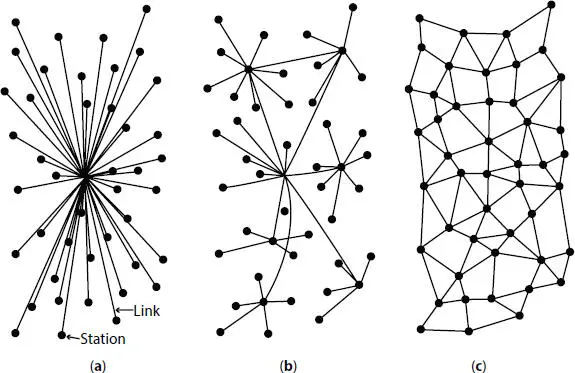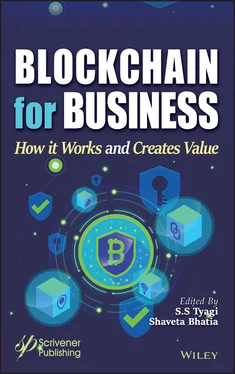At the point when the intermediary gets much information on input and output, this mechanism will shroud the correspondences between each message’s origin and destination. The order of arrival is covered up by yielding the uniformly estimated items in random patterns. Moreover, to minimize the danger of the single intermediary being the attacker, multiple intermediaries can be connected together thereby creating a mix cascade [1, 2].
Over the most recent couple of years, the services have been applied to the blockchain network to obfuscate the transaction history and reduce the risk of de-anonymization. These research efforts center around two main methods: (I) centralized mixing and (ii) decentralized mixing.
1 a. Centralized mixing is to mix transactions anonymously at the cost of some service fees. There are plenty of websites which work or behave like online mixers and swap the transactions among different users so as to shroud the relationship between their incoming and active transactions [1]. Likewise, most of them are reachable or contactable just through the TOR network which empowers anonymous communications through a free, worldwide, volunteer overlay network.
2 b. Decentralized mixing Decentralized mixing is to moderate the denial of services (DOS) danger caused or raised by the centralized services; a decentralized mixing design is proposed to empower a lot of commonly entrusted companions to distribute their messages at the same time and anonymously without the need of an outsider anonymity proxy [1, 4]. Another significant advantage of this methodology is the end of the requirement for mixing expenses. Moreover, it is nearer and progressively perfect to the decentralized structure of blockchain contrasted with the incorporated mixing design. Up until this point, there are for the most part two strategies to accomplish the decentralized mixing process, i.e., Coin Join and multi-party calculation (MPC).
Although the decentralized mixing techniques gives an “excellent” mixing in the blockchain, but they still need a delay till the time participants discover or find their partners for their transactions to be mixed. The ring signature enables a user (also a member of a set) to sign a message on behalf of the “ring” of members but there is no way to say that which one is real and who have signed. The core idea and methodology of this technology is the choice of a set without any central manager, which will significantly improve privacy in blockchain [1].
Brief of mixing services in blockchain [1].
| Protocol |
Anonymity |
Centralized Party |
Mix Cost |
Sybil Strength |
Dos Strength |
Mixing Scale |
Theft Strength |
Waiting Time |
| Mixing website |
Linkable at mixer |
Required |
Yes |
Good |
Poor |
L/A |
High |
Long |
| CoinSwap |
Linkable at mixer |
Required |
Yes |
Good |
Poor |
N/A |
Safe |
Long |
| Mixcoin |
Linkable at mixer |
Required |
Yes |
Good |
Poor |
N/A |
Accountable |
Long |
| Blindcoin |
Unlinkable |
Required |
Yes |
Good |
Poor |
N/A |
Accountable |
Long |
| Blindly Signed Contracts |
Unlinkable |
Required |
Yes |
Good |
Poor |
N/A |
Safe |
Long |
| TumbleBit |
Unlinkable |
Required |
Yes |
Good |
Good |
L/T |
Safe |
Long |
| Dash |
Unlinkable |
Required Many |
Yes |
Good |
Good |
Less |
P/D |
Normal |
| Coinjoin |
Internal Unlinkable |
Decentralized |
No |
Poor |
Poor |
Less |
High |
Long |
| CoinShuffle |
Unlinkable |
Decentralized |
No |
Good |
Moderate |
Less |
High |
Long |
| XIM |
Unlinkable |
Decentralized |
No |
Moderate with fees |
Moderate with fees |
Large |
Low |
Long |
Abbreviations:
L/A—Limited to access
N/A—No Limitation
L/T—Limited by transaction
P/D—Prevented with deposit
1.6 Decentralization Challenges Exist in Blockchain
The very basic definition of Blockchain states and implies that, in relation to Figure 1.6, it is a decentralized ledger that can store information quite securely and immutably, utilizing cryptographic encryption and hashing techniques. But it seems in reality, that the word ‘decentralized’ is somehow stuck only to the definition [5]. A number of Blockchains out there in the market make use of centralized mechanisms.
But what exactly does this word “decentralization” means? Does it only refer to data being processed “not at the same place (distributed)?”
As explained by Vitalik Buterin in his blog, the decentralization can be categorized or viewed into three perspectives—first is “Architectural”. This states the number of physical computers attached or is in the network? Second comes “Political”—How many entities control these computers? And the last “Logical”—that derives that does the data structure and interfaces of the computers or systems act like a single structure or a swarm [5]?
No one controls Blockchains and they don’t have the infrastructural central or head point of failure. Hence, they are politically and architecturally decentralized. However, they are or can be said logically centralized since they act and behave like a single entity/computer.
But even if the above definition is correct and acceptable, then are blockchains as they are today decentralized?

Figure 1.6Different types of Networks in blockchain [5]. (a) Centralized. (b) Decentralized. (c) Distributed networks.
The answer majorly comes is NO, because of these possible reasons:
Having four computers instead of having one is always better. But what if all the computers get infected with same issue or defect?
All the nodes in a Blockchain run the same client software, and if they get some issues or turns out to be buggy, reason may be any or then the whole system can come to a pause/standstill. This can put a question mark on the architectural decentralization of the Blockchains [5, 6].
In a Blockchain which uses the proof-of-work consensus mechanism and majority of the miners are from the same country, the government of that country can choose or decide to seize and control or stop all the mining farms on the account of national security [7]. This scenario or case is a major threat to the political decentralization of Blockchain.
Similarly, in a proof of stake Blockchain, if more than 70% of the coins at stake are held at one exchange, can put the political decentralization of the Blockchain at risk.
Moreover, if the majority of mining hardware (infrastructure) is built by the same company, it can also compromise the political decentralization of the Blockchain [8].
So, that means centralized Blockchains are not that good or of no use?
Not majorly, and this is because Blockchains serve various purposes, and these may require them to be centralized.
According to the report of Crytpo asset Taxonomy, about 16% of crypto currencies are said to be fully decentralized. The other crypto currencies reviewed are either centralized, or only semi-decentralized. Only 9% of all utility tokens were found to be sufficiently decentralized and only 7% of financial assets such as those born from initial coin offerings are decentralized [9, 10]. Crypto currencies such as Bitcoin, Stellar, Litecoin that work primarily as a payment method are among the most decentralized types of crypto assets, as per the report.
Читать дальше













